Nancy Moser's Blog, page 11
March 2, 2011
Discovering Newport
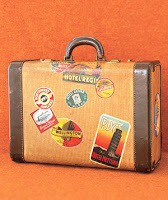 When it's time for vacation, my family--like most of you--tends to go to a place that's different from where we live. We live in a big city in the Midwest, so to relax we go to a lake or the mountains in Colorado. People who live in the desert go to a place that's green and cool; people on the shore go to the mountains, etc.
When it's time for vacation, my family--like most of you--tends to go to a place that's different from where we live. We live in a big city in the Midwest, so to relax we go to a lake or the mountains in Colorado. People who live in the desert go to a place that's green and cool; people on the shore go to the mountains, etc. 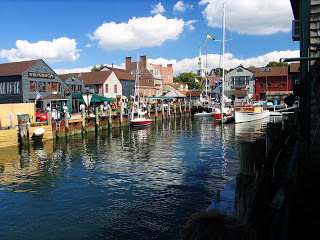
But during the Gilded Age (the last few decades of the 19th century) where did people go to escape the cities of New York and Boston? One of the most popular destinations was Newport, Rhode Island. Actually, I have roots in Newport--old roots. An ancestor of my family landed in what would become Newport. The town was founded by Englishmen in 1639 and my very great-grandfather stepped foot there in 1643. Of course, native Americans had been in the area for 5000 years. At first, Newport was a haven for those seeking religious freedom, but it soon became a bustling center of trade.
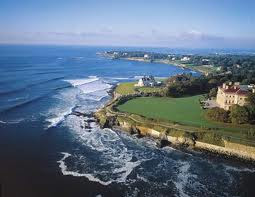 My husband and I discovered Newport in 2007 and were immediately charmed by the waterfront of tall ships and sailboats, and the amazing Cliff Walk. Edging the east side of the island, the rugged Cliff Walk is a narrow public path dividing the waves crashing on the rocks close by and the stunning mansions of the mega rich.
My husband and I discovered Newport in 2007 and were immediately charmed by the waterfront of tall ships and sailboats, and the amazing Cliff Walk. Edging the east side of the island, the rugged Cliff Walk is a narrow public path dividing the waves crashing on the rocks close by and the stunning mansions of the mega rich.During the last half of the 19th century, Newport became a vacation spot for the middle class and for the wealthy industrialists of New York and Boston. The mingling of the two classes added interest to a city used to independent spirits.
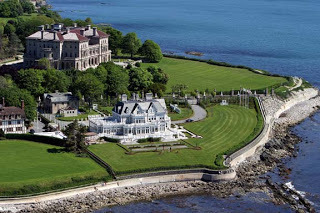 After the Civil War, beautiful summer homes were built on and around Bellevue Avenue. Owners were senators, bankers, railroad barons, and entrepreneurs. This was a time before income tax, leaving plenty of income to build lavish (and more lavish) mansions. These homes were often inspired by European castles and palaces, yet they were called "cottages". Very funny. Millions of dollars were spent on the homes—homes that were only used for 6-8 weeks each summer.
After the Civil War, beautiful summer homes were built on and around Bellevue Avenue. Owners were senators, bankers, railroad barons, and entrepreneurs. This was a time before income tax, leaving plenty of income to build lavish (and more lavish) mansions. These homes were often inspired by European castles and palaces, yet they were called "cottages". Very funny. Millions of dollars were spent on the homes—homes that were only used for 6-8 weeks each summer.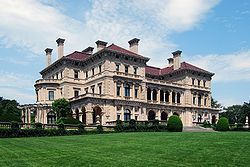 My husband and I took tours of many of these mansions (the Breakers, Marble House, the Elms…) and were blown away by the gold and the gilt, the marble, statuary, carvings, and furnishings. But mostly, we were impressed by the massive size. The Breakers (I'll go into more detail in a future blog) encompasses 65,000 square feet. It was built for Cornelius Vanderbilt II and his wife Alice. This was a single family home? Its construction was a successful attempt to one-up its neighbor. Next door, Cornelius' brother and sister-in-law (William K. and Alva Vanderbilt) lived in the regal Marble House that boasted 500,000 cubic feet of marble. Talk about keeping up with the Jonses...
My husband and I took tours of many of these mansions (the Breakers, Marble House, the Elms…) and were blown away by the gold and the gilt, the marble, statuary, carvings, and furnishings. But mostly, we were impressed by the massive size. The Breakers (I'll go into more detail in a future blog) encompasses 65,000 square feet. It was built for Cornelius Vanderbilt II and his wife Alice. This was a single family home? Its construction was a successful attempt to one-up its neighbor. Next door, Cornelius' brother and sister-in-law (William K. and Alva Vanderbilt) lived in the regal Marble House that boasted 500,000 cubic feet of marble. Talk about keeping up with the Jonses...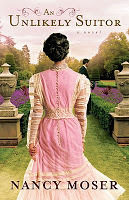 The vastness, the decadence, and the image of a summer vacation far different from anything I'd ever experienced, spurred me to write a novel set in Newport.
An Unlikely Suitor
comes out May 1 (you can preorder it now). It's the story of an immigrant seamstress from NYC who befriends a rich socialite. The two girls end up in Newport during the height of the summer season in 1895. What a culture shock for Lucy Scarpelli to go from the immigrant slums of Five Points to the opulence of these mansions.
The vastness, the decadence, and the image of a summer vacation far different from anything I'd ever experienced, spurred me to write a novel set in Newport.
An Unlikely Suitor
comes out May 1 (you can preorder it now). It's the story of an immigrant seamstress from NYC who befriends a rich socialite. The two girls end up in Newport during the height of the summer season in 1895. What a culture shock for Lucy Scarpelli to go from the immigrant slums of Five Points to the opulence of these mansions.In the coming weeks I'll share some of the interesting historical tidbits I discovered as I wrote this novel. I hope you'll enjoy this journey through Lucy's Cinderella season in Newport.//Nancy Moser
February 17, 2011
Love, Duty, and Honor
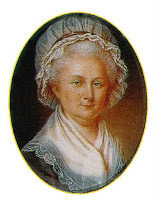 While we are speaking of great loves, I offer you another: Martha and George Washington. They were an unlikely pair. Physically they were almost laughable: he, 6'4" and she around 5'. He, tall and lanky and she, plump. That's our image of her; a pudgy woman wearing a funny hat, walking in George's shadow.
While we are speaking of great loves, I offer you another: Martha and George Washington. They were an unlikely pair. Physically they were almost laughable: he, 6'4" and she around 5'. He, tall and lanky and she, plump. That's our image of her; a pudgy woman wearing a funny hat, walking in George's shadow.How untrue! Yes, she grew pudgy, and the odd cap was the fashion--and worn to make her look taller, but George called her "my other self." I'd melt if my husband called me that!
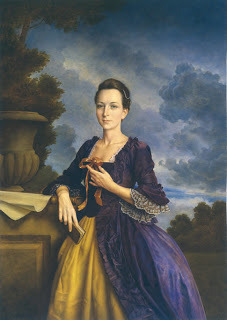 A modern rendition of how
A modern rendition of how Martha might have looked When George and Martha met, she was a pretty twenty-six-year-old widow—the richest widow in Virginia. She'd married Daniel Custis when she was nineteen and together they ran the White House plantation in New Kent County, Virginia; near Richmond and Williamsburg (the name of the plantation is a bit ironic, don't you think? And it was massive: 17,000 acres.
They had four children, but two died. And then Daniel died, leaving Martha with four-year-old Jacky and 18-month old, Patsy. She was sought after by many suitors but she vowed if she married again she would marry for love. For though she had loved the 38-year-old Daniel Custis in a fashion, it had been a marriage of respect rather than passion. She also vowed to marry a man nearer her own age. She didn't want to be widowed twice.
One weekend when she and the children were staying over at a neighbor's estate, a dashing young hero of the French and Indian war happened by. George Washington stayed for dinner. He and Martha hit it off and stayed up all night talking. In hindsight the bond has God's hand all over it.
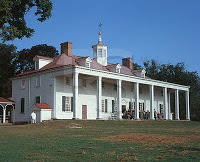 Mt. Vernon Soon after, they became betrothed, then married at White House in 1759. Martha heard the rumors that George was marrying her for her money—and knew it was partially true. George had a small plantation (1700 acres) up north. He had big dreams for Mt. Vernon. Martha was excited about the prospect of working together as a couple to achieve those dreams.
Mt. Vernon Soon after, they became betrothed, then married at White House in 1759. Martha heard the rumors that George was marrying her for her money—and knew it was partially true. George had a small plantation (1700 acres) up north. He had big dreams for Mt. Vernon. Martha was excited about the prospect of working together as a couple to achieve those dreams. The one regret Martha had about their marriage was that she didn't let George fully be a father to her children. She over-indulged them and Jacky grew to be wild and nearly unmanageable. And sadly, she and George never had any children of their own. I often wonder why God didn't allow this great man—this great couple—to have heirs.
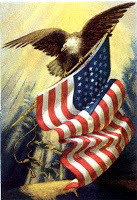 George and Martha had ten "golden years" at Mt. Vernon, but the unrest between the Colonies and their mother country, England, heightened to the point that a stand had to be made. It was war. And George, with his military experience and his reputation as an honorable man who was liked by people of all locales and walks of life, was the perfect choice to lead the army.
George and Martha had ten "golden years" at Mt. Vernon, but the unrest between the Colonies and their mother country, England, heightened to the point that a stand had to be made. It was war. And George, with his military experience and his reputation as an honorable man who was liked by people of all locales and walks of life, was the perfect choice to lead the army.When the fighting started in New England, George left Martha at Mt. Vernon, to do his duty. The war did not go well. The colonists were out maneuvered, out financed, out trained… yet they felt in their hearts that theirs was a worthy cause. And they felt God was on their side.
 In the winter, when both sides hunkered down to wait for spring, George had to stay up north. If he left, the American troops were more than willing to go home to their shops and farms. For eight years he remained away from Mt. Vernon.
In the winter, when both sides hunkered down to wait for spring, George had to stay up north. If he left, the American troops were more than willing to go home to their shops and farms. For eight years he remained away from Mt. Vernon.So what did Martha do? Every winter she traveled up north and joined George in the camps: Morristown, Valley Forge . . . the conditions were horrible, the supplies scarce. She brought as many supplies as she could from Mt. Vernon. And she sat by the soldiers, held their hands, listened to their stories of home and family, and prayed with them. They came to anticipate the visits of Lady Washington.
But even more than this, Martha was there for George. She was his sounding board, his comforter, his other self. They were a pair ideally suited to each other and the situation at hand.
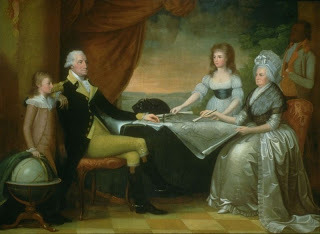 President and Mrs. Washington and two
President and Mrs. Washington and two of their grandchildrenWhen the war was finally over a new government had to be formed—from scratch. For this new United States of America didn't want to do things the old way with kings and queens. They wanted to create a new and better way of government. They decided there would be a president elected by the people. And again, who better to bridge the disparity of this wide-spread country of independent-minded people than the man who had led them to victory.
Martha did not want George to be president. Hadn't he—hadn't they—sacrificed enough? Duty was all well and good, but didn't there come a time when a couple could let others lead?
Martha disliked the eight years of George's presidency. There was much upheaval because everything was new, everything had to be created from nothing. When it was finally time to go back to Mt. Vernon, they both relished the time alone under their own "vine and fig tree." And yet they were not alone. During the first year they had over 600 overnight guests. I can imagine Martha shaking her head as another stranger knocked on their door. "Set another plate for dinner…"
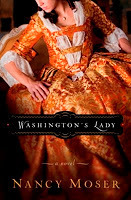 It's said that without George Washington there would be no United States, but without Martha, there would be no George Washington. She was not a woman in his shadow, but his partner, standing right there, by his side.
It's said that without George Washington there would be no United States, but without Martha, there would be no George Washington. She was not a woman in his shadow, but his partner, standing right there, by his side.If you'd like to read more of Martha's story, read my biographical novel, Washington's Lady. //Nancy
February 14, 2011
1650 Bedford, England and Jody Hedlund, author of The Preacher's Bride
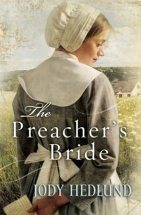 A word from Stephanie:
A word from Stephanie:
When I received The Preacher's Bride as a Christmas gift, I had no idea what a wonderful reading experience I was in for. True confession: I'm not really inclined towards the Puritans, and I haven't read Pilgrim's Progress, so I might not have chosen this book without a little nudge.
I've learned my lesson. Give something new a try ... especially if its about something old :-).
The Preacher's Bride teaches wonderful biblical truths. In fact, not long ago I read a couple of passages aloud to someone going through a tough time, because those passages encouraged me so very much.
I loved this book so much that I e-mailed the author to see if she would drop by Footnotes and share her novel inspiration from history. I hope you enjoy what she shares. I know you'll enjoy The Preacher's Bride. --Stephanie
· What artifact, place, historical event, or woman from history made you want to write this book?
When I was reading about John Bunyan (the author of Pilgrim's Progress), I ran across the story about how his second wife, Elizabeth, bravely defended him in front of a court of judges after he'd been accused of unlicensed preaching.
I loved her courage and determination, and I decided I wanted to tell her story to the world. So much is known about some of the great heroes of the faith, but so little is told of the incredible women who stood by their sides and helped shape them into the men they became.
· How much of your book is based on true history and how much did you add?
The Preacher's Bride is inspired by the relationship of John Bunyan and Elizabeth. In telling the story, I drew from numerous biographies as well as some of the books John wrote (including Pilgrim's Progress). I developed the story around what we know (the facts), even adding in famous quotes of John Bunyan throughout the book.
Then I filled in the details of what isn't known about the couple. For Elizabeth, that ended up being quite a bit since not much is written about her. While I had to develop her family and history, I was able to use almost all of the words she spoke at John's trial at the end of The Preacher's Bride which showcased her incredible inner strength as well as devotion to John.
· What was the most romantic thing you learned about "the real story" while researching this book?
At the end of his life, John Bunyan wrote this in a deed, "The natural affection and love which I have and bear into my well-beloved wife, Elizabeth." I thought his words were so romantic, especially after years of marriage. It just showed how much they'd grown to love and appreciate each other over the years.
· What one non-fiction book helped you research the most (for those who want to learn more)?
While doing research for The Preacher's Bride, I read an incredibly insightful and well-written book about the Puritans called, Worldly Saints: The Puritans as They Really Were by Leland Ryken. It provided a treasure chest of information about Puritan life as well as numerous quotes that were inspiring and challenging to my own faith.
One of the things that I found the most fascinating about Puritan life was the emphasis they put on family worship time. This was an integral part of their everyday lives and Fathers took seriously the call to lead their family's spiritual instruction
· What spiritual encouragement did you draw from what you've learned?
God wants to use our hardships to develop our holiness. The message developed as I wrote, really piggy-backing off the message of Pilgrim's Progress—that the hard path leads to holiness. Christian, in Pilgrim's Progress learned that the easy way is often Satan's way of tempting us away from what God is calling us to. I wanted to portray that message in the lives of John and Elizabeth too.
 Visit author Jody Hedlund at:
Visit author Jody Hedlund at:http://jodyhedlund.blogspot.com/
February 4, 2011
How Do I Love Thee?
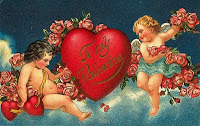 In this month devoted to romantic love, I want to share a love story that was as unlikely as it was destined…
In this month devoted to romantic love, I want to share a love story that was as unlikely as it was destined…
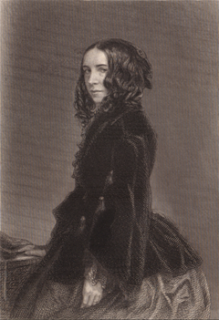 Elizabeth Barrett Elizabeth Barrett was the oldest child in a family of twelve children. Her father had sugar plantations in Jamaica (which used slave labor) but chose to live in England. He built a whimsical house for his family in Herefordshire and called it Hope End. It was very isolated, and in retrospect, it seems like he enjoyed being the end-all to his family, and keeping them from mingling too much in society. The family was happy—if not eccentric. The children were schooled at home and even the girls were encouraged in their studies—rare in the 1820's. Elizabeth (known as "Ba" to her family) was delicate and struggled with her health, but she was gifted in regard to poetry. All was well until her mother and brother died.
Elizabeth Barrett Elizabeth Barrett was the oldest child in a family of twelve children. Her father had sugar plantations in Jamaica (which used slave labor) but chose to live in England. He built a whimsical house for his family in Herefordshire and called it Hope End. It was very isolated, and in retrospect, it seems like he enjoyed being the end-all to his family, and keeping them from mingling too much in society. The family was happy—if not eccentric. The children were schooled at home and even the girls were encouraged in their studies—rare in the 1820's. Elizabeth (known as "Ba" to her family) was delicate and struggled with her health, but she was gifted in regard to poetry. All was well until her mother and brother died.Those tragedies changed everything, and the family moved to Wimpole Street in London, where the tone of their lives became constricted and even oppressive. Their father proclaimed that none of his children could marry.
For the most part, the children abided by his wishes, and remained loyal, though not always complacent. The power he had over them was unhealthy and rather frightening.
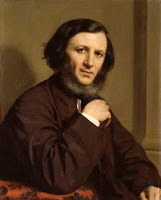 Robert Browning
Robert Browning In London, Ba took up residence in the top floor of the house amid her books, her pen, and her beloved spaniel, Flush. She had literary success, getting many of her epic poems published, and had a close group of writer friends who came to call, sharing their work, their ambition, and their inspiration. Virtually an invalid, Ba contented herself with this odd life, hidden away from the world beyond her family.
That is, until she received a letter from a younger author, Robert Browning: "I love your verses with all my heart, dear Miss Barrett..." So began a correspondence that led to much more. Much, much more. At the mature age of 38, Elizabeth Barrett, a woman who never imagined romance, found herself in love with a man who adored her. Her love for Robert flowed from her pen:
How do I love thee? Let me count the waysI love thee to the depth and breadth and heightMy soul can reach, when feeling out of sightFor the ends of Being and ideal Grace.I love thee to the level of everyday'sMost quiet need, by sun and candlelight.I love thee freely, as men strive for Right;I love thee purely, as they turn from Praise.I love thee with the passion put to useIn my old griefs, and with my childhood's faith.I love thee with a love I seemed to loseWith my lost saints—I love thee with the breath,Smiles, tears, of all my life!—and, if God choose,I shall but love thee better after death.
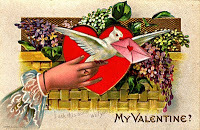 The poem, whose first lines are still known today--150 years after they were penned--was not written for publication, but simply as an emotional release. That fact alone, gives the words special meaning.
The poem, whose first lines are still known today--150 years after they were penned--was not written for publication, but simply as an emotional release. That fact alone, gives the words special meaning.And yet, because of this love, because of her father's oppression, Elizabeth's love of Robert had to remain a secret. And yet, because of the strength of their love, Elizabeth gained the courage she needed to break free.
But the cost was great...
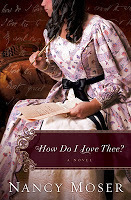 Isn't that the way of all great love? To love is to sacrifice, is to choose we instead of me. To love is to risk everything, for there are no guarantees. Loving is hard. It's a decision. It's surrender. But as the Bible says, "Three things will last forever--faith, hope, and love--and the greatest of these is love." (I Corinthians 13: 13.) What God has joined together, let no man put asunder . . .
Isn't that the way of all great love? To love is to sacrifice, is to choose we instead of me. To love is to risk everything, for there are no guarantees. Loving is hard. It's a decision. It's surrender. But as the Bible says, "Three things will last forever--faith, hope, and love--and the greatest of these is love." (I Corinthians 13: 13.) What God has joined together, let no man put asunder . . .If you'd like to read a novel about Elizabeth's life and love, read my biographical novel, How Do I Love Thee? Their love story is ever so poignant, even moreso because it was real.//Nancy Moser
January 20, 2011
Hats Off--or On?
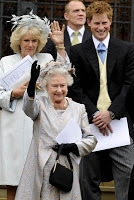 When was the last time you wore a hat? It was two degrees here the other day, and only reluctantly did I pull on a warm cap. Considering the nylon of my coat froze within seconds and crackled like paper, it was a wise move. But unless you're British royalty, a construction worker, a cowboy, or any male under the age of thirty (I detest baseball caps), you've probably been bare-headed more than not.
When was the last time you wore a hat? It was two degrees here the other day, and only reluctantly did I pull on a warm cap. Considering the nylon of my coat froze within seconds and crackled like paper, it was a wise move. But unless you're British royalty, a construction worker, a cowboy, or any male under the age of thirty (I detest baseball caps), you've probably been bare-headed more than not.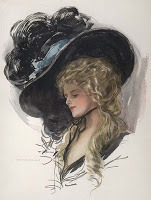
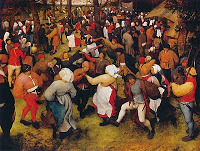 Through the ages, why did people wear hats? For warmth, for protection, to show humility—and status. It's fascinating how mankind moved through nearly two-thousand years in the A.D. of the world before we made the choice to say no-thanks to daily headgear. How audacious of us to change everything.
Through the ages, why did people wear hats? For warmth, for protection, to show humility—and status. It's fascinating how mankind moved through nearly two-thousand years in the A.D. of the world before we made the choice to say no-thanks to daily headgear. How audacious of us to change everything.
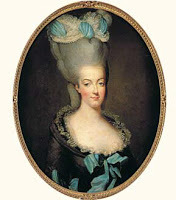
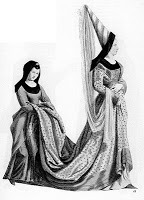 Not that I want to return to the absurdity of the cone-heads of medieval times, or the massive hair-hat creations of the French court, but the nice bonnets of the Regency period and the sweeping hats of the Gibson Girl era are rather pretty.
Not that I want to return to the absurdity of the cone-heads of medieval times, or the massive hair-hat creations of the French court, but the nice bonnets of the Regency period and the sweeping hats of the Gibson Girl era are rather pretty.
 Actually, it wasn't too many years ago that a woman (or man) wouldn't dare be seen in public without a hat. It was the topper to many a smart-looking outfit.
Actually, it wasn't too many years ago that a woman (or man) wouldn't dare be seen in public without a hat. It was the topper to many a smart-looking outfit.

I doubt there's a definitive moment when hats went out of favor, but from my own recollections I think Jackie Kennedy was one of the last to wear a snappy pillobox hat and look good doing it. Did hats die with the assassination of the president in 1963? Might they represent something innocent and crisp and elegant that we, as a country, relinquished when our president was murdered in front of our eyes?
I don't know. In some cases even hindsight is blind. Yet I can truly say I'm okay with the no-hat style of today. Unless we change the whole of fashion to be classy and classic, unless we get the entire country to agree to give up jeans, jogging suits, and teeshirts, we don't deserve the luxury of wearing lovely hats.
January 6, 2011
A Glove on the Hand
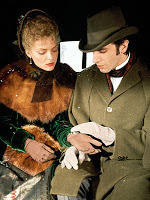 The other scene is quite famous (or is it infamous?) It's the scene when Michelle Pfeiffer's and Daniel Day-Lewis' characters are in a carriage. The sexual tension between the two fuels the entire story, and in the carriage, Daniel (as Newland Archer) goes crazy and unbuttons Michelle's (Ellen's) glove in order to kiss the only inch of skin not covered in her Gilded Age garb. It was one of the most sensuous scenes I've ever seen. My husband (who by this time was wondering why he'd ever agreed to go to the movie with me) thought it was ridiculous. I won't go any further with a discussion of what men and women consider romantic, but I will say that movie got me interested in the history of gloves.
The other scene is quite famous (or is it infamous?) It's the scene when Michelle Pfeiffer's and Daniel Day-Lewis' characters are in a carriage. The sexual tension between the two fuels the entire story, and in the carriage, Daniel (as Newland Archer) goes crazy and unbuttons Michelle's (Ellen's) glove in order to kiss the only inch of skin not covered in her Gilded Age garb. It was one of the most sensuous scenes I've ever seen. My husband (who by this time was wondering why he'd ever agreed to go to the movie with me) thought it was ridiculous. I won't go any further with a discussion of what men and women consider romantic, but I will say that movie got me interested in the history of gloves.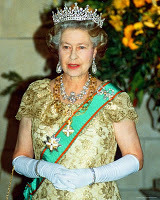
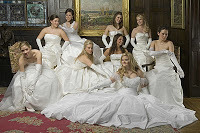 Nowadays, if we aren't debutantes or royalty, we only wear gloves when it's freezing outside, so I don't have much personal experience, although I do remember wearing white gloves with my Easter outfits in the 1960's, and feeling quite spiffy.
Nowadays, if we aren't debutantes or royalty, we only wear gloves when it's freezing outside, so I don't have much personal experience, although I do remember wearing white gloves with my Easter outfits in the 1960's, and feeling quite spiffy.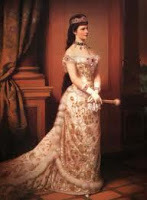
Obviously, gloves have been around for centuries, but they really became a part of fashion in the 1700's, when over-the-elbow gloves came in vogue. When Napoleon's Josephine (who wore them because she didn't like her hands) wore them long enough to reach the puff in her short sleeves, long gloves swept the empire. Here's another empress, the Austrian Empress Sissi in her gloves circa 1854.
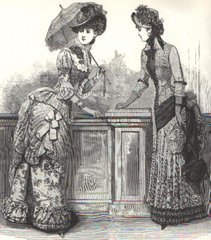
By the end of the 1800's, women's everyday clothes tended to cover most of the arm, so wrist length gloves became popular—except for evening, of course, when dresses showed off the arms. To ease getting into the long gloves, a slit was added, and the opening was closed with three or four buttons. Snaps became vogue in the late 1890's. But putting those long gloves on was a chore and often required a buttonhook, and as such it was not proper to put them on in public. You put them on and kept them on until you went home. Actresses Sarah Bernhardt and Lillian Russell added to the craze.
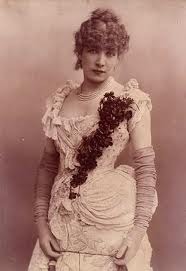 Actress Sarah Bernhardt Have you ever tried to do anything with gloves on? It's difficult. But women found a way around the problem by slipping their hands out of the finger-part, and popped them out the opening.
Actress Sarah Bernhardt Have you ever tried to do anything with gloves on? It's difficult. But women found a way around the problem by slipping their hands out of the finger-part, and popped them out the opening.
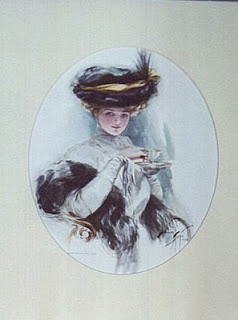 Drinking tea outside the glove Although gloves at the beginning of the 19th century came in a multitude of colors, during Victorian times white and ivory were it—black being too flashy. Gloves were so much a part of a woman's identity that many women asked to be buried in their gloves.
Drinking tea outside the glove Although gloves at the beginning of the 19th century came in a multitude of colors, during Victorian times white and ivory were it—black being too flashy. Gloves were so much a part of a woman's identity that many women asked to be buried in their gloves. 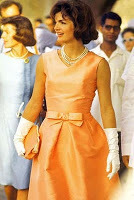
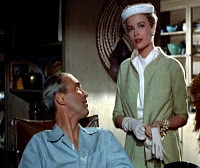 During my growing up years I remember Grace Kelly wearing gloves in "Rear Window", Audrey Hepburn in "Breakfast at Tiffany's", and of course the fashion icon, Jackie Kennedy. Women wore gloves to church, out shopping, and certainly to bridge club. My mother was one of these women. I always associate gloves with elegance and class. Considering the world could use a healthy dose of both, perhaps I should start a trend.
During my growing up years I remember Grace Kelly wearing gloves in "Rear Window", Audrey Hepburn in "Breakfast at Tiffany's", and of course the fashion icon, Jackie Kennedy. Women wore gloves to church, out shopping, and certainly to bridge club. My mother was one of these women. I always associate gloves with elegance and class. Considering the world could use a healthy dose of both, perhaps I should start a trend.December 30, 2010
Where Did I Put my Keys?
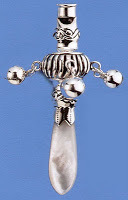 Nanny whistle, pacifier,
Nanny whistle, pacifier,and rattle in one
When I did the research for my Gilded Age novel Masquerade, I discovered the solution of the time: chatelaines. These pieces of jewelry were the answer to organizing a woman's stuff. Whatever items women deemed necessary throughout their day were simply hung from chains and clipped to their waistbands or belts.
They were very specialized. Nannies had kid-stuff at their fingertips: a nanny whistle, pacifier, and rattle.
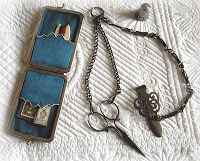 Seamstress chatelaineSeamstresses had scissors, needles, thimbles, and bobbins of thread at their fingertips.
Seamstress chatelaineSeamstresses had scissors, needles, thimbles, and bobbins of thread at their fingertips.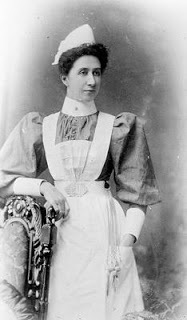
Maids mights have keys, scissors . . . hmm. I can't see the details on this picture. What else might she have on her chains?
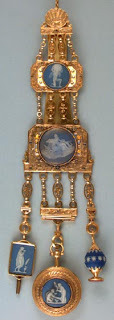
Fine ladies might have a small purse attached, perfume, mirror, and pencil. Or a watch. They were made of sterling or gold, with semi-precious stones.
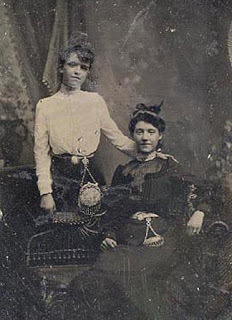
As a collector of antique purses, I can vouch for the fact that purses of the day held next to nothing, and actually, the wealthy ladies had no need to carry money or keys. They rarely went out without their men, so relied on them to carry such things. Chatelaines were a nice (and pretty) way to carry around some bulkier items--and to show off some gold and stones as an accessory.
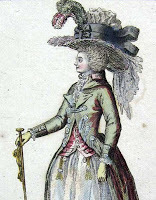
Plus, when I think about the logistics of carrying a purse, I see the advantage of the hands-off chatelaine. With bustles and gloves and parasols . . . a lady needed her hands free to deal with her clothes, getting in and out of carriages, holding up her skirt so as not to trip on stairs, and finding a way to sit and move through a room without getting caught on a stray table or Victorian gew-gaw.
Ah, the freedom we have in our fashion today! But a chatelaine . . . it has real possibilities.
December 27, 2010
New Year's Eve on the Prairie
I was initially drawn to my love of history because I was encouraged by the lives of pioneer women during a very difficult time in life. Learning about what they endured gave me perspective on my own trials. As we close out 2010 and ponder the New Year, I thought you might find a pioneer woman's New Year's musings of interest. I've interspersed the historic record with some personal musings [In brackets]
Emily Carpenter was 42 years old when, on August 12, 1872, she and her family (which included 3 boys and 4 girls ranging in age from 1 to 16 years old) left Bear Creek Valley in Wisconsin headed for Nebraska. The Carpenters two-wagon train included oxen Buck & Bright, Tom & Jerry, Dave & Dandy, and Duke & Derby, four cows, a gray pony named Badger, and Colonel—the dog. Moving wasn't new to Emily. She'd already lived in New Hampshire, Massachusetts, and two different counties in Wisconsin.[So much for the idea of pioneers living a hundred years on the home place!]
The Carpenters move came as a result of a letter from a homesteading friend in Nebraska. Seven children, their parents, and a brother-in-law began life "in a house of one room size 14 x 16 with attic." [Oh … my … goodness. And I thought MY house was small for company!]That winter they "put up a story and half frame house with a combined kitchen, dining room and living room, a bedroom and pantry down stairs and one large room upstairs. [And that was the "big new house."]"
Mrs. Carpenter served as a nurse/midwife in the neighborhood and "was noted for being able to go calmly from one case to another." She lived on her homestead for 32 years. One of her daughters paid tribute this way: "If Ma could write a line -- her line in that big book up there -- I know about what she would write. Something like this: 'arrived here safely after a few mishaps.' These are the words she wrote in her journal when they arrived in Gibbon at the close of their trip from Wis. in the fall of 1872."
As you contemplate the end of 2010 and the beginning of 2011, I thought you might find a few New Year's Eve entries from a Nebraska pioneer woman's diary of interest:
1885
Christmas tree New Years Day. We all went except E.W.C. and Lydia. The tree was very good but some were offended at the jokes. [The more things change, the more they stay the same!] The young folks watched the Old Year out and New in at Pool's ranch. They sang the old out the New in. Many that commenced the year with us have gone to their long home. Our hearts have been made sad many times during the past few months at parting with friends. I went to town once during the year. [Did you catch that? She went to town ONCE … all year.] Brought home some few things for Christmas.
1887
The last day of the old year. The day is cold and dreer. The storm is howling. No one is in today. All shivering around a cob fire. [Thank you, Father, for central heat … forgive me for complaining about the bill.] Yet we should not complain, for many would be glad of as good. [Give me a heart to thank you like Mrs. Carpenter's.] Winter with his frosty breath is giving us a little of the Artic regions where he is supposed to hold his coast. The past year has brought many changes to our family. Hulda and Cyril married the past year. [Thank you for the new love you've given young couples this past year!] Steve's little boy has come to greet us all with his pleasant smiles. Randie's little girl with her dear little coaxing ways has stole our hearts away. [Thank you for grand-children and their pleasant smiles and dear little coaxing ways. What a joy it is to spoil them.] May the coming year be a happy one and may we all be spared to the close. [May I ever be mindful of the blessing of today and not take it for granted.]
1888
The last day of the year has come again. The day is nice and warm. . . . The evening finds only mother, E.W.C. and I at home. Mother has gone to her room. . . I sit here and think over the changes of the year. Dear little Fannie has gone, forever is still the little voice. Dear little one "gone before.". . . Uncle Aaron Sleeper has died during the year. [Thank you, Father, for the medical advances that have made children's illnesses less life-threatening.] Five grand children have come to bless and cheer. May their lives be happy. Poor Mrs. Hunneybun was among the living a year ago and also Mrs. Whitakers, now they have joined the majority. Soon we shall join them a few years at the most. Soon we shall lay the burden down. Soon we shall rest from all the toil and care of earth. [My life is so much easier than it would have been in 1888. Thank you for tall the labor-saving inventions. Help me to complain less.] How blest if our work is only well done. From all our toil to find release. At the close of the year we are given to sober thoughts. Shall we be here at the close of the coming year, and if here will we be happy in the consciousness of a year well spent in good. Let us strive to be active in good work, slow to do or think evil to our neighbor, Make the golden mile our mile. [Amen, Lord!] So shall our days in contentment be passed, knowing we have done our best. Good-bye little book and old year. Laid by are you both. You pages are written full. We can not go back now to make any changes. Good-bye, good-bye.
1889
To night is the last of 1889 The year has sped away with the swiftness of an arrow shot from the bow. Friends dear are gone who were here at the beginning. They have turned their faces from us and have gone; others have crossed to the other shore, and O! how we miss them.
1895
The last day of 1895 has come. Soon the last day of our life. So many have gone during this year. Our little Agnes went and how our hearts ache. So young to bid all goodbye. No more will her feet on willing errands go. Never more on us to smile. The little hands are still that were so busy. yes, she has passed to the great beyond where others of our dear ones have gone. What would we not give to know if they have met and know each other there. In God's own time all will be manifest. A few more years at most will be lived, then too we shall join the many.
May we all begin the new year with Mrs. Carpenter's sense of "making the most of the time" as Ephesians says … BLESSED NEW YEAR!
December 20, 2010
White Christmas
Remember featherbeds and pallets on the floor? Remember sleeping in you grandparents unheated upstairs and making a run for it in the morning to dress by the stove in your grandmother's kitchen? Remember being snowed in and loving it?
Much of the nostalgia I feel about having snow this time of year is probably a result of the modern era inventions that have made it so much easier to deal with the effects. Here's a heroic (at least I see him as a hero) storm story related by one Nebraska pioneer who was writing to his wife back home about his experiences in the west:
... now I can tell you of one of the most terrible storms I ever witnessed. It struck us at sunset Sunday evening with wind & rain ... Monday morning it turned to snow ... the storm lasted from sunset Sunday evening till near midnight Wednesday night making near 80 hours storm. When we would go out to try to do anything fo r the stock we could not see other more than from 5 to 10 ft & to be heard we had to shout at the top of the voice on account of the wind blowing such a gale ... there was a woman about a mile from here with 4 children whose husband was away from home and I knew she had but little wood if any so Wednesday afternoon I concluded to make the effort to reach her and see how they were getting along & I had to go right against the storm ... I would proceed abut 5 rd [rods] then turn and get a little breath then try it again in this way I succeeded in reaching the house & she was mighty glad to see me as they were out of wood and the ax buried under the snow. They had been in bed for 2 days only as she would break up something in the house to burn & cook something for the children to eat the oldest was only 7 years old. I dug the ax from under the snow hunted my way to a pig pen g ot a couple of poles and cut wood enough to do till next day then started home again ...
I'm thankful I don't have to worry about getting to the well and hauling in water, or breaking frozen water before I can wash up or make coffee in the morning. I often have the luxury of avoiding even going out when the weather is at its worst. Oh, I do my share of whining about shoveling and snowblowing when Nebraska winters rage, but overall, I have it fairly easy compared to my pioneer foremothers.
Have a safe and blessed Christmas, friends ... and a white one, too, if that's your heart's desire.
Stephanie G.
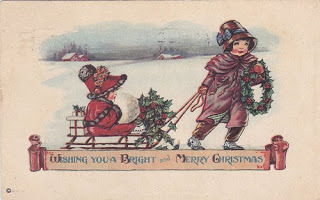
December 16, 2010
Fickle Fashion
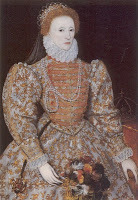 It's said that women are slaves to fashion. Unfortunately, it's a very true statement. Here are a few cases that show how fickle women's fashion has been through the ages, and how we women have meekly followed the trends:
It's said that women are slaves to fashion. Unfortunately, it's a very true statement. Here are a few cases that show how fickle women's fashion has been through the ages, and how we women have meekly followed the trends:Ruff-Ruff: It's said Queen Elizabeth I was often sewn into her clothes (it would be 300 years before the zipper made dressing easy.) But beyond that tidbit, I don't understand the ruff from this era. In order to get fabric to hold its form it has to be stiff. Perhaps this is where the phrase, "Keep your chin up" came about. At least men were subjected too. Enough ruff.
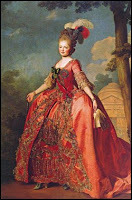 The Anchor Skirt: That's not a real term, just my take on the shape of the ridiculous side-contraptions that swept through Europe from Russia to France in the last half of the eighteenth century. I understand women often try to camouflage their hips, but please. Didn't they get tired of entering a room sideways?
The Anchor Skirt: That's not a real term, just my take on the shape of the ridiculous side-contraptions that swept through Europe from Russia to France in the last half of the eighteenth century. I understand women often try to camouflage their hips, but please. Didn't they get tired of entering a room sideways?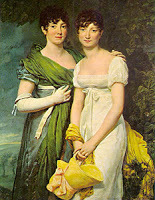 The Great Reveal: After the American and French Revolutions, fashion said off-with-your-head to any dress that required blueprints to create and to wear. The result was gowns that let the skirt fall free from an "empire" waist. As a result, women were discovered to have legs! It seemed as though a dose of reason had finally taken over fashion. But stupidity was just around the corner …
The Great Reveal: After the American and French Revolutions, fashion said off-with-your-head to any dress that required blueprints to create and to wear. The result was gowns that let the skirt fall free from an "empire" waist. As a result, women were discovered to have legs! It seemed as though a dose of reason had finally taken over fashion. But stupidity was just around the corner …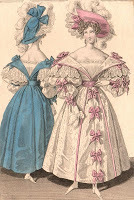 Idiot Sleeves: I didn't name this one—it's the real name of the huge sleeves of the Romantic Era of fashion (1825-35). Skirts were simpler but full again—though sometimes they were short enough to reveal a woman's ankle. Apparently the cling of the full leg of the previous Regency fashion was too much to bear. Or too tempting?
Idiot Sleeves: I didn't name this one—it's the real name of the huge sleeves of the Romantic Era of fashion (1825-35). Skirts were simpler but full again—though sometimes they were short enough to reveal a woman's ankle. Apparently the cling of the full leg of the previous Regency fashion was too much to bear. Or too tempting?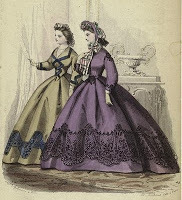 Frankly My Dear: Hoops. Big ones. A hundred years earlier, women had to walk sideways through doors. Now they had to watch how they sat down or the entire world would get a show. At least this style gave women a pretty bell silhouette. Ding-dong-ding swung the bell as they walked.
Frankly My Dear: Hoops. Big ones. A hundred years earlier, women had to walk sideways through doors. Now they had to watch how they sat down or the entire world would get a show. At least this style gave women a pretty bell silhouette. Ding-dong-ding swung the bell as they walked.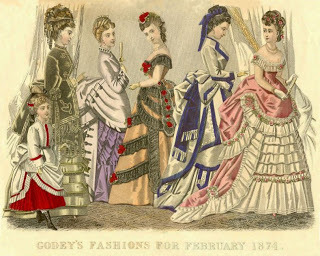 Baby Got Back: The 1870's and 80's brought about the bustle. Padding and cages and over-draping and flounces, pushing out the back of the dresses. Now women had to sit on the edge of their chairs to leave room for what was behind. Backless bustle-chairs were created to solve this problem. At least when they walked there was a nice sway.
Baby Got Back: The 1870's and 80's brought about the bustle. Padding and cages and over-draping and flounces, pushing out the back of the dresses. Now women had to sit on the edge of their chairs to leave room for what was behind. Backless bustle-chairs were created to solve this problem. At least when they walked there was a nice sway. Baa-Baa: The leg-o-mutton sleeves of the 1890's made wearing a coat difficult. Supposedly the enormous width of a woman's top half made her waist look tiny. Maybe I should try it. I can use all the help I can get.
Baa-Baa: The leg-o-mutton sleeves of the 1890's made wearing a coat difficult. Supposedly the enormous width of a woman's top half made her waist look tiny. Maybe I should try it. I can use all the help I can get.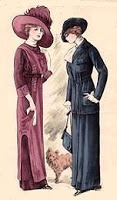 Here's the Skinny: The second decade of the 20th century brought a skinny silhouette. Finally women could sit comfortably in a chair, walk through doorways, and not fear a high wind. Yet some of the skirts went too far (surprise, surprise) and the "hobble skirt" was born. It's self-explanatory.
Here's the Skinny: The second decade of the 20th century brought a skinny silhouette. Finally women could sit comfortably in a chair, walk through doorways, and not fear a high wind. Yet some of the skirts went too far (surprise, surprise) and the "hobble skirt" was born. It's self-explanatory.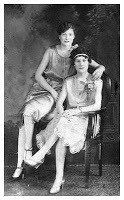 Dapper Flapper: WWI was over, Europe was free of its oppressors (for the moment) and women took note and freed themselves from corsets, hoops, waistlines, as well as sleeves and long skirts. Bare arms, shoulders, knees, and calves. Yikes! Fabrics were sheer and flowing—great for dancing the Charleston, smoking cigarettes, and drinking a dry martini.
Dapper Flapper: WWI was over, Europe was free of its oppressors (for the moment) and women took note and freed themselves from corsets, hoops, waistlines, as well as sleeves and long skirts. Bare arms, shoulders, knees, and calves. Yikes! Fabrics were sheer and flowing—great for dancing the Charleston, smoking cigarettes, and drinking a dry martini.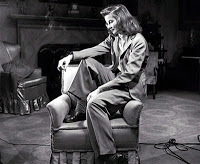 The Pants in the Family: The forties had women taking on men's jobs while the men were at war. Again. With the responsibilities came the ease of menswear. Finally women were allowed to wear pants! No one wore menswear better than Katherine Hepburn.
The Pants in the Family: The forties had women taking on men's jobs while the men were at war. Again. With the responsibilities came the ease of menswear. Finally women were allowed to wear pants! No one wore menswear better than Katherine Hepburn.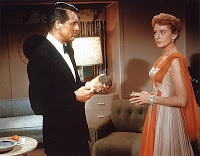 Corsets Again?: From the fabric rationing of WWII came the circle skirts of the fifties. And small waists and pronounced bosoms. Think Deborah Kerr's wardrobe in "Indiscreet" and "An Affair to Remember." Dreamy. All girl. This would be my choice for fashion. It was fabulously pretty and elegant. Of course, this was also the age of Cary Grant and all his luscious movies, so I can't be certain he's not a big part of my choice.
Corsets Again?: From the fabric rationing of WWII came the circle skirts of the fifties. And small waists and pronounced bosoms. Think Deborah Kerr's wardrobe in "Indiscreet" and "An Affair to Remember." Dreamy. All girl. This would be my choice for fashion. It was fabulously pretty and elegant. Of course, this was also the age of Cary Grant and all his luscious movies, so I can't be certain he's not a big part of my choice.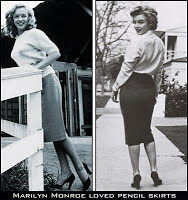 Hobble Skirts II: Pencil skirts accentuated the bottom half and sweaters and cone-like bras accentuated the top. Girdles were essential. No thanks.
Hobble Skirts II: Pencil skirts accentuated the bottom half and sweaters and cone-like bras accentuated the top. Girdles were essential. No thanks.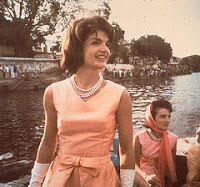 Jackie Oh!: Our first lady was the epitome of class in her tailored suits and sheath dresses. But Mod was also in, and took the sheath to higher heights. Our favorite girl was "That Girl" Marlo Thomas.
Jackie Oh!: Our first lady was the epitome of class in her tailored suits and sheath dresses. But Mod was also in, and took the sheath to higher heights. Our favorite girl was "That Girl" Marlo Thomas. Dippie Hippie: The seventies was all about one thing: anything goes. Mini's, maxi's, midi's. Caftans, bell bottoms, granny dresses, gypsy skirts, polyester knit, and psychedelic tie-dye (I wore them all.) It was grungy and dirty and unkempt, but it was oh-so comfy. But would comfy ever coincide with classy?
Dippie Hippie: The seventies was all about one thing: anything goes. Mini's, maxi's, midi's. Caftans, bell bottoms, granny dresses, gypsy skirts, polyester knit, and psychedelic tie-dye (I wore them all.) It was grungy and dirty and unkempt, but it was oh-so comfy. But would comfy ever coincide with classy? Power Woman: I hate to admit it, but I still have a few suits from the eighties. How do I know they're from that era? The ridiculous shoulder pads and stupid neck ties—tied in bows. Women were trying too hard to look powerful. Yuck. Yuck. Yuck. I need to call Goodwill for a pickup.
Power Woman: I hate to admit it, but I still have a few suits from the eighties. How do I know they're from that era? The ridiculous shoulder pads and stupid neck ties—tied in bows. Women were trying too hard to look powerful. Yuck. Yuck. Yuck. I need to call Goodwill for a pickup.And now . . . Oddly, it's hard for me to pinpoint fashion right now. Comfort is in, but pants are skinny and wide, long or capris. I have dresses that are reminiscent of the 20's, 40's, and beyond. Fashionable boots have high heels or flat rubber soles. It's almost hard to wear something that's out of style. As I sit here in my jeans, bulky sweater, and corsetless torso I can count myself lucky that fashion is one element of my life that I don't stress over. Have we women finally—finally—found enough confidence to make our own choices? Perhaps. Until the next fashion show piques our interest. Just no hoops please.//Nancy




